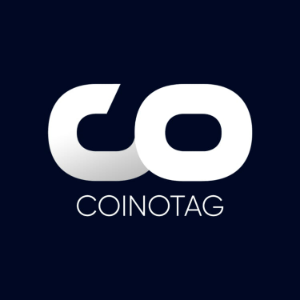Qtum Stablecoin: A Revolutionary Leap for Decentralized Finance
7 min read
BitcoinWorld Qtum Stablecoin: A Revolutionary Leap for Decentralized Finance The cryptocurrency world is constantly evolving, with new developments emerging that promise to reshape the digital economy. One of the most significant trends in recent years has been the rise of stablecoins – digital assets designed to maintain a stable value, often pegged to fiat currencies like the US dollar. They act as a crucial bridge between the volatile world of cryptocurrencies and the stability of traditional finance. Now, an exciting announcement has emerged from the Qtum ecosystem, signaling a major step forward for the network and the broader decentralized finance (DeFi) landscape. Patrick Dai , the visionary founder of Qtum, recently took to X (formerly Twitter) to reveal ambitious plans for the launch of a native Qtum stablecoin . This move is not just another token launch; it represents a strategic enhancement designed to bolster liquidity, utility, and adoption within the Qtum network, pushing the boundaries of blockchain innovation and strengthening the overall crypto ecosystem . Unveiling the Qtum Stablecoin: What Does It Mean for the Network? The news of a native Qtum stablecoin has sent ripples of anticipation through the community. But what exactly does this mean for the Qtum network and its users? At its core, a stablecoin aims to mitigate the notorious price volatility associated with cryptocurrencies. By pegging its value to a more stable asset, it provides a reliable medium of exchange, a store of value, and a unit of account within the blockchain environment. For Qtum, the introduction of its own stablecoin could unlock a myriad of possibilities, addressing several key needs: Enhanced Liquidity: A native stablecoin can significantly boost liquidity for decentralized exchanges (DEXs) and other DeFi protocols built on Qtum, making trading more efficient and less prone to slippage. Predictable Transactions: For users and businesses conducting transactions, a stablecoin offers predictability, removing the risk of value fluctuations between the start and end of a payment. New dApp Opportunities: Developers can leverage the stability of the new Qtum stablecoin to build more robust and user-friendly decentralized applications (dApps) for lending, borrowing, payments, and even complex financial instruments. Reduced Friction: Currently, users often rely on stablecoins from other chains (e.g., USDT, USDC) bridged to Qtum, which can introduce additional fees and complexities. A native stablecoin simplifies the user experience. This development is a clear signal of Qtum’s commitment to building a self-sufficient and thriving DeFi ecosystem, ensuring that its users have access to stable financial tools directly on their preferred network. Patrick Dai’s Vision: Driving Blockchain Innovation on Qtum Behind every significant blockchain development is a driving force, and for Qtum, that force is its founder, Patrick Dai . Known for his foresight and dedication to pushing the boundaries of what’s possible in the decentralized space, Dai’s announcement of the Qtum stablecoin is a testament to his ongoing commitment to blockchain innovation . From its inception, Qtum was designed as a hybrid blockchain, combining the robust security of Bitcoin’s UTXO model with the smart contract capabilities of Ethereum’s EVM. This unique architecture has allowed Qtum to carve out a distinct niche in the crowded crypto landscape. Dai’s vision extends beyond simply providing a platform for smart contracts; he aims to create a truly decentralized, scalable, and user-friendly blockchain that can support real-world applications. The stablecoin fits perfectly into this grander scheme. It’s a foundational layer that enables more sophisticated financial services, making the network more appealing to both developers looking to build next-generation dApps and users seeking practical blockchain solutions. This strategic move by Patrick Dai reinforces Qtum’s position as a forward-thinking project continually adapting to the evolving needs of the crypto ecosystem . Empowering Decentralized Finance: How Qtum’s Stablecoin Can Reshape DeFi The emergence of decentralized finance (DeFi) has revolutionized traditional financial services, offering permissionless, transparent, and censorship-resistant alternatives. However, the inherent volatility of most cryptocurrencies has been a significant barrier to mainstream DeFi adoption. This is where stablecoins play a pivotal role, and Qtum’s entry into this space with its own native stablecoin holds immense potential to reshape its DeFi landscape. Consider the current state of DeFi on Qtum. While the network supports smart contracts, the absence of a deeply integrated, highly liquid native stablecoin limits the scope and efficiency of financial protocols. With the new Qtum stablecoin , we can anticipate: Robust Lending and Borrowing: Users can confidently lend and borrow stable assets without worrying about sudden price crashes affecting their collateral or loan value. Efficient Yield Farming: Providing liquidity to stablecoin pairs will become more attractive, offering more predictable returns for yield farmers. Seamless Payments and Remittances: The stablecoin can facilitate low-cost, near-instant cross-border payments and remittances, making it a viable alternative to traditional banking rails. Gateway for Institutional Adoption: Institutions often seek stability. A reliable native stablecoin could pave the way for greater institutional interest and investment in Qtum’s DeFi protocols. By providing this essential building block, Qtum is not just participating in decentralized finance ; it’s actively empowering it, aiming to foster an environment where financial innovation can truly flourish on its network. Beyond the Stablecoin: Qtum’s Broader Blockchain Innovation Landscape While the Qtum stablecoin is a significant step, it’s important to view it within the broader context of Qtum’s ongoing commitment to blockchain innovation . Qtum has always prided itself on its unique technological foundation. Its hybrid architecture, combining Bitcoin’s UTXO model with Ethereum’s EVM, offers a compelling blend of security, scalability, and flexibility. Furthermore, Qtum has been at the forefront of implementing features like Account Abstraction, which aims to make blockchain interactions more user-friendly and secure by allowing for customizable transaction logic. The stablecoin launch complements these existing innovations by providing the financial stability necessary for real-world utility. Imagine a scenario where enterprises can build supply chain solutions on Qtum, using the stablecoin for payments and settlements, leveraging the network’s robust security and smart contract capabilities. Or consider the potential for gaming dApps, where in-game economies can utilize the stablecoin for predictable value, enhancing the player experience. Qtum’s dedication to continuous improvement, including research into scalability solutions like sharding and advancements in its Proof-of-Stake consensus mechanism, positions it as a leader in the race for true blockchain adoption. The stablecoin is not an isolated event but a strategic piece in Qtum’s larger puzzle of creating a comprehensive and resilient blockchain infrastructure that can stand the test of time and support the diverse needs of the evolving crypto ecosystem . The Ripple Effect: How Qtum’s Stablecoin Impacts the Wider Crypto Ecosystem The introduction of a new, well-supported stablecoin by a prominent network like Qtum doesn’t just affect its immediate ecosystem; it sends a ripple effect across the entire crypto ecosystem . Stablecoins are increasingly seen as the backbone of decentralized finance, facilitating everything from trading to lending and payments. As more networks launch their native stablecoins, it contributes to a more diversified and robust stablecoin market, reducing reliance on a few dominant players. For the wider market, a successful Qtum stablecoin could: Increase Interoperability: As the stablecoin gains traction, it could become a valuable asset for cross-chain transfers and interoperable applications, connecting Qtum more deeply with other blockchain networks. Attract New Users: The promise of stability and utility can draw new users into the Qtum network who might be hesitant to engage with highly volatile cryptocurrencies. This expands the overall user base of the crypto space. Foster Competition and Innovation: Qtum’s move might encourage other Layer 1 blockchains to accelerate their own stablecoin initiatives or improve existing ones, leading to healthier competition and more rapid blockchain innovation across the board. Enhance Market Maturity: The proliferation of diverse and well-managed stablecoins signals a maturing market, moving beyond speculative trading towards practical, everyday financial applications. This strategic step by Patrick Dai and the Qtum team is a testament to their ambition not just for their own network but for their contribution to the broader adoption and utility of blockchain technology within the global financial landscape. Challenges and the Road Ahead While the prospect of a native Qtum stablecoin is exciting, the journey ahead will not be without its challenges. The stablecoin market is highly competitive, dominated by established players with significant liquidity and brand recognition. Qtum’s stablecoin will need to differentiate itself, perhaps through unique features, strong community support, or seamless integration with its existing dApps. Regulatory scrutiny on stablecoins is also intensifying globally. Ensuring compliance, transparency regarding reserves, and robust auditing will be paramount for the stablecoin’s long-term success and credibility. Furthermore, achieving widespread adoption will require continuous development, strong partnerships, and effective marketing efforts to educate users and developers about its benefits and use cases within the decentralized finance ecosystem. Despite these hurdles, the commitment from Patrick Dai and the Qtum team, coupled with the inherent advantages of a native stablecoin, positions this initiative for success. It represents a bold step towards a more stable, efficient, and user-friendly crypto ecosystem . A New Era for Qtum The announcement of a native Qtum stablecoin by founder Patrick Dai marks a pivotal moment for the network. It’s a strategic move that underscores Qtum’s unwavering commitment to blockchain innovation and its vision for a more robust and accessible decentralized finance landscape. By introducing stability and enhanced utility, this stablecoin has the potential to significantly expand Qtum’s reach, attract new users and developers, and solidify its position as a key player in the ever-evolving crypto ecosystem . As the crypto world watches, Qtum is poised to embark on a new era of growth and adoption, bringing greater stability and utility to its users worldwide. To learn more about the latest crypto market trends, explore our article on key developments shaping the decentralized finance landscape and its future potential. This post Qtum Stablecoin: A Revolutionary Leap for Decentralized Finance first appeared on BitcoinWorld and is written by Editorial Team

Source: Bitcoin World



